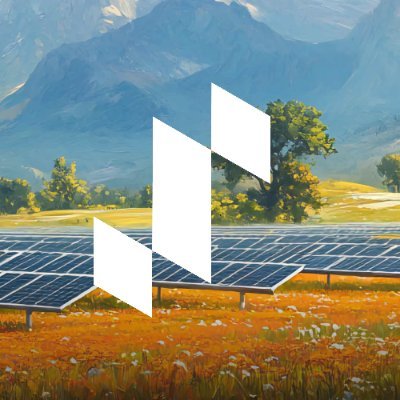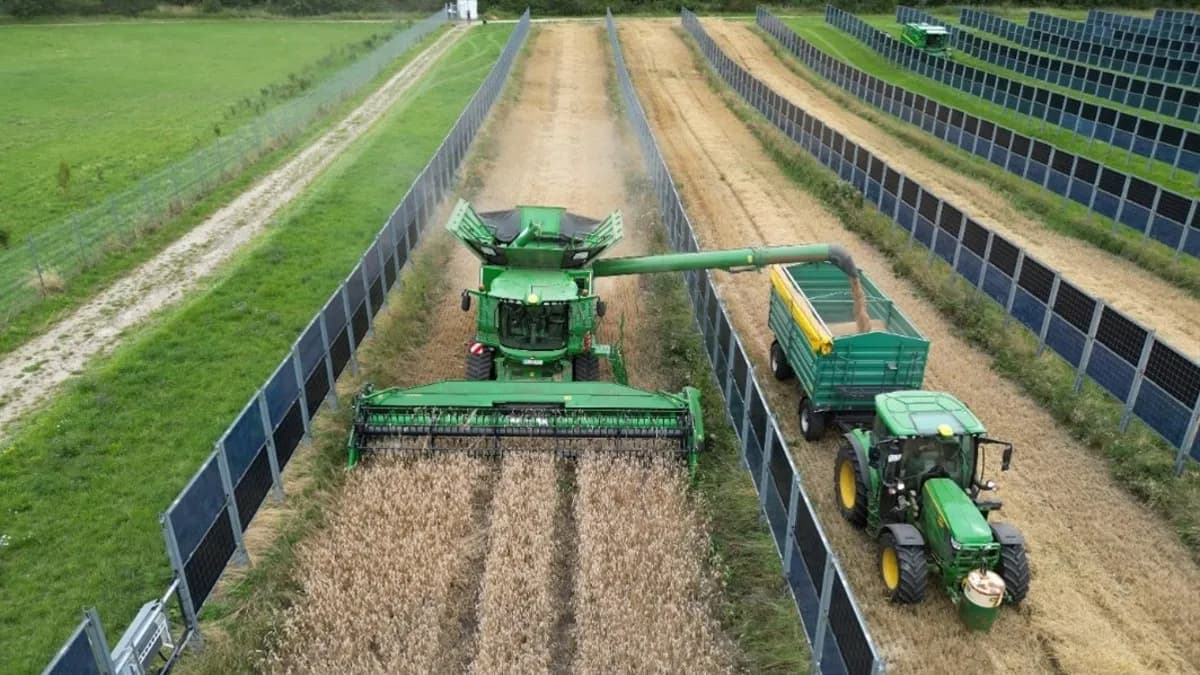Is Solar Energy A Good Match For Farmers?



What is involved in farming?
Farming involves a variety of processes and activities aimed at producing food, fiber, and other products through the cultivation of plants and animals. Here are 10 key components involved in farming:
1. Soil Preparation
Soil preparation is the foundation of successful farming. It begins with testing the soil to assess its nutrient content and pH levels, allowing farmers to understand its fertility. Tilling is then done to break up the soil, improving aeration and making it easier for roots to penetrate. Farmers often amend the soil by adding fertilizers or organic matter, enhancing its ability to support healthy plant growth.
2. Planting
Choosing the right crops is crucial and depends on various factors, including climate, soil type, and market demand. Once selected, planting involves sowing seeds or transplanting seedlings at the appropriate depth and spacing. Timing is essential; farmers must plant at the right moment to align with seasonal weather patterns, maximizing the chances for a successful harvest.
3. Crop Management
Effective crop management involves several ongoing practices, including irrigation, weed control, and pest management. Farmers often implement irrigation systems to ensure plants receive adequate water, especially in dry periods. Weeds are managed through a combination of mechanical, chemical, and organic methods, while integrated pest management (IPM) strategies help control pests with minimal environmental impact.
4. Fertilization
Fertilization is a critical step in ensuring crops receive the nutrients they need to thrive. Based on soil tests, farmers apply fertilizers to supplement the natural nutrients in the soil. In organic farming, this often involves the use of compost or manure, which not only enriches the soil but also promotes sustainable practices by recycling nutrients.
5. Harvesting
Harvesting is a time-sensitive process that involves collecting crops at their peak ripeness to ensure the best yield and quality. Farmers use various techniques, from manual harvesting to mechanized equipment, depending on the scale and type of crop. Proper timing is crucial, as harvesting too early or too late can significantly affect the market value and taste of the produce.
6. Post-Harvest Handling
After harvesting, crops require careful post-harvest handling to minimize spoilage and maintain quality. This includes proper storage techniques to prolong freshness and prevent damage. In many cases, farmers also engage in processing activities, such as cleaning and packaging, to prepare their products for market, ensuring they meet consumer standards.
7. Livestock Management
For farms that include livestock, management involves breeding, feeding, and health care. Farmers select breeding stock based on desirable traits to enhance herd quality. Providing a balanced diet is essential for promoting health and growth, while regular monitoring and veterinary care help prevent and address health issues, ensuring the overall well-being of the animals.
8. Sustainability Practices
Sustainability practices are increasingly important in modern farming. Techniques like crop rotation help improve soil health by alternating different crops in the same field, reducing pest populations and nutrient depletion. Cover crops are planted during off-seasons to prevent soil erosion and enhance soil fertility, while conservation tillage practices minimize soil disturbance, preserving its structure and ecosystem.
9. Market and Distribution
Once products are ready for sale, farmers must effectively market and distribute them to reach consumers. This can involve selling directly at farmers’ markets, through cooperatives, or via online platforms. Efficient distribution ensures that fresh products reach consumers quickly, maximizing their quality and value.
10. Record Keeping
Finally, record keeping is an essential practice for farmers. Detailed documentation of expenses, yields, and farming practices provides valuable insights that inform future decisions. By analyzing this data, farmers can refine their methods, improve efficiency, and enhance profitability over time, contributing to the overall success of their farming operations.
How does Solar Energy work?
The simplest way to explain solar energy is to say that it converts sunlight into usable electricity or heat. However, in Solarpunk, we want you to dive deeper into the main processes behind this transformation:
Photovoltaic (PV) Cells: These are the most common method for converting solar energy into electricity. PV cells, made of semiconductor materials like silicon, absorb photons from sunlight. When sunlight hits these cells, it knocks electrons loose from their atoms, creating an electric current.
Solar Panels: Multiple PV cells are combined into solar panels. When sunlight strikes the panels, the generated current flows through an inverter, which converts the direct current (DC) into alternating current (AC), making it usable for homes and businesses.
Solar Thermal Energy: Another approach uses solar thermal systems, which collect sunlight to heat a fluid (often water). This heated fluid can then be used directly for heating or to produce steam that drives a turbine to generate electricity.
Concentrated Solar Power (CSP): This method uses mirrors or lenses to focus sunlight onto a small area, generating high temperatures. The heat produces steam that drives a turbine to create electricity, similar to traditional power plants but using solar energy.
Storage and Distribution: Many solar energy systems are connected to the grid or include battery storage, allowing excess energy generated during the day to be stored and used at night or during cloudy periods.
Overall, solar energy is a clean, renewable resource that reduces reliance on fossil fuels and lowers greenhouse gas emissions.
Can Farming and Solar Energy be combined?
Absolutely, solar energy and farming can be effectively combined in several ways! This practice is often referred to as "Agrivoltaics" or "Solar Agriculture". Here are a few key benefits and methods:
Dual Land Use: Solar panels can be installed above crops, allowing for farming to continue beneath them. This maximizes land use and can even provide shade for certain plants, helping them thrive in hotter climates.
Reduced Water Evaporation: The shade from solar panels can reduce evaporation rates in the soil, potentially conserving water and benefiting crops.
Increased Energy Resilience: Farmers can produce their own energy, reducing reliance on external power sources and lowering energy costs.
Biodiversity Support: Certain configurations of solar panels can support biodiversity by allowing for various crops to be planted and wildlife to thrive.
Innovative Practices: Some farms integrate solar panels with greenhouse systems, using the energy generated to power operations while maintaining optimal growing conditions.
Community Benefits: Local farmers can sell excess energy back to the grid, creating an additional revenue stream.
Why should we combine Farming and Solar Energy?
Combining farming and solar energy offers numerous advantages that can benefit both farmers and the environment. Here’s why it’s a smart move:
1. Make Every Acre Count
Double Your Land’s Potential: With solar panels, you can grow crops and generate energy at the same time. It’s like having your cake and eating it too!
2. Boost Your Income
New Revenue Stream: Selling excess energy back to the grid means more cash flow. Imagine the extra funds you could reinvest in your farm!
Increased Property Value: Solar installations can increase your property’s value. Future buyers often see solar as an asset, making your farm more attractive in a competitive market.
3. Slash Your Energy Costs
Lower Bills: Harness the power of the sun to reduce or even eliminate your electricity expenses. More money saved means more opportunities to grow!
4. Better Yields
Crop Protection: Solar panels provide shade that can help protect your crops from scorching heat, leading to healthier plants and potentially bigger harvests.
5. Conserve Water
Less Evaporation: The shade helps keep your soil moist, reducing the need for irrigation. This means you can use your water more efficiently and save on costs.
6. Farm Sustainably
Go Green: By using solar energy, you’re reducing your reliance on fossil fuels and contributing to a healthier planet. It’s a great story to tell your customers!
7. Encourage Wildlife
Biodiversity Boost: Solar farms can provide habitats for beneficial insects and animals, helping your ecosystem thrive alongside your crops.
8. Be Energy Independent
Power for Your Farm: Generating your own energy means you’re less affected by price spikes or outages. This stability can be crucial for your operations.
9. Take Advantage of Incentives
Financial Help Available: Many programs offer grants, tax breaks, or subsidies for farmers going solar. This makes the initial investment much easier to handle.
10. Prepare for the Future
Adapt to Changes: With climate change affecting agriculture, solar energy can help you adapt and keep your farm thriving in changing conditions. line.
By integrating solar energy into your farming operation, you’re not just investing in your business; you’re also supporting a sustainable future for agriculture. It’s a win-win for your farm and the environment!
The sustainable future for agriculture and energy
In summary, solar energy is a practical and sustainable way for farmers to save money, gain energy independence, and support environmental health. It’s a smart investment for both your farm and the future. By utilizing land for dual purposes, farmers can:
- Maximize Land Use: Grow crops and generate energy simultaneously.
- Boost Income: Create new revenue streams by selling excess energy.
- Reduce Costs: Lower energy bills by harnessing solar power.
- Enhance Crop Yields: Protect plants from extreme heat with solar panel shade.
- Conserve Water: Reduce evaporation and optimize irrigation.
- Promote Sustainability: Decrease reliance on fossil fuels and contribute to a healthier planet.
- Support Biodiversity: Foster habitats for beneficial wildlife alongside crops.
- Gain Energy Independence: Ensure stable energy sources for farm operations.
- Access Financial Incentives: Take advantage of grants and subsidies for solar investments.
- Adapt to Climate Change: Build resilience against shifting weather patterns.